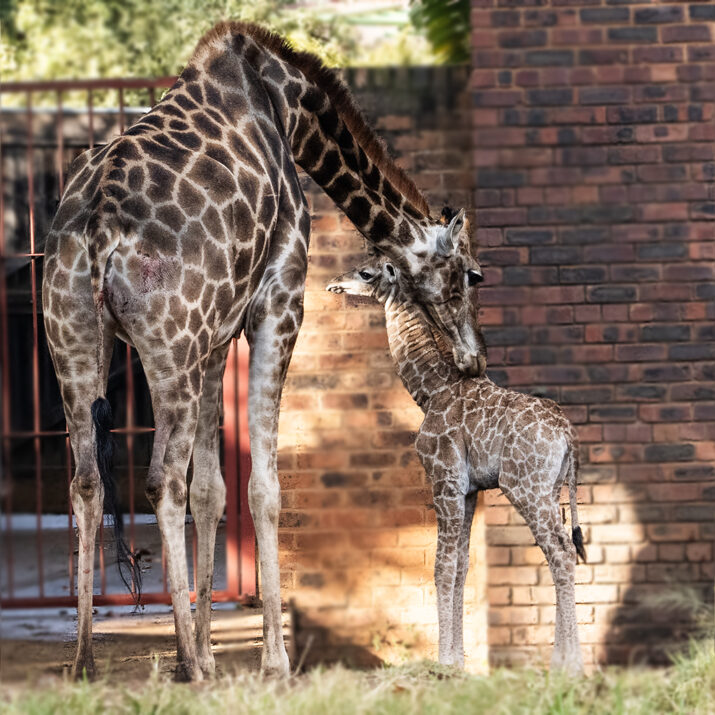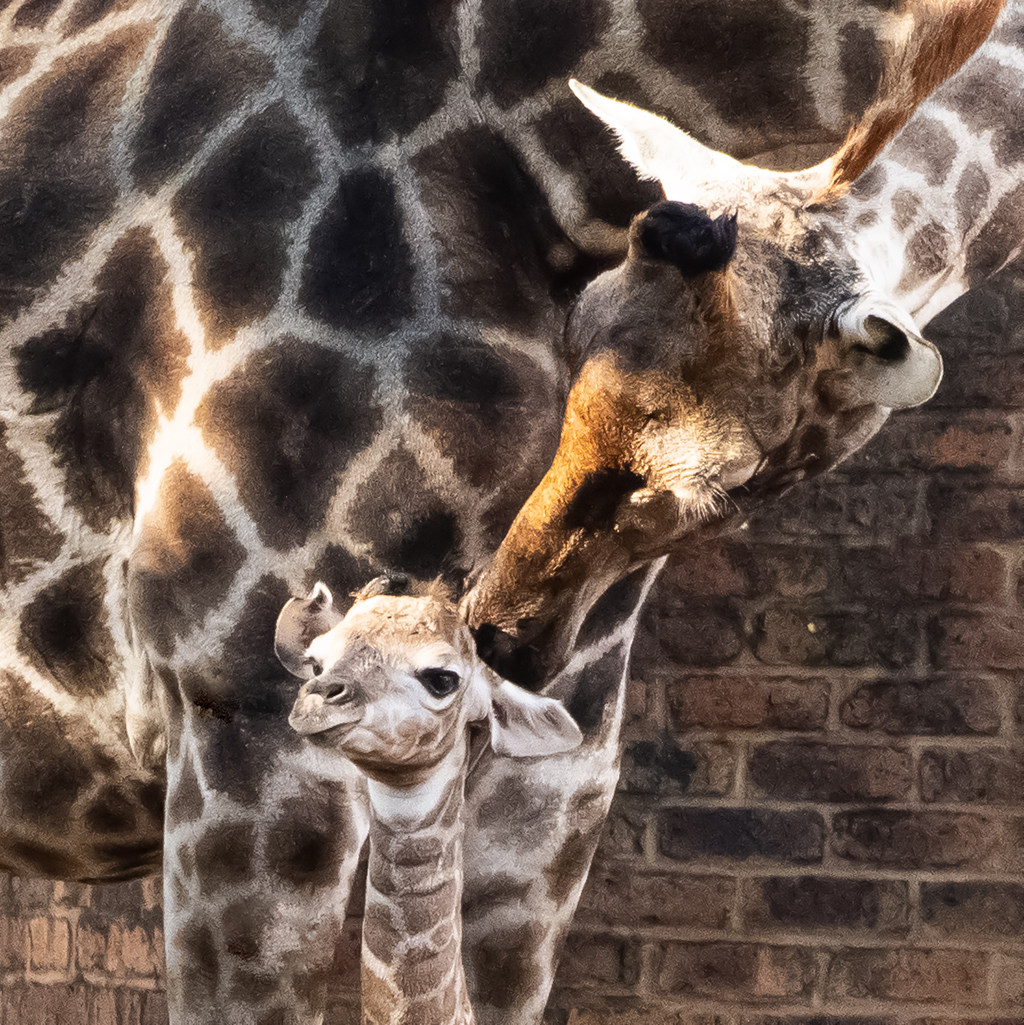
The National Zoological Garden (NZG), is proud to announce the birth of a baby giraffe as the global community celebrates World Giraffe Day on 21 June, a day initiated by the Giraffe Conservation Foundation (GCF) to honour the world’s tallest land animal on the longest day of the year.
The NZG is home to five giraffes, each with a unique personality and story.
Among NZG’s giraffes is Momo, an 11-year-old matriarch known for her calm and independent nature. On 8 June, Momo gave birth to a healthy calf, a significant and joyful addition to the zoo family. “Our team has decided to name the new calf Enzo, meaning ‘ruler of the estate’, says Carol Thobela, Curator: Carnivores Pachyderms and Farmyard at NZG. “It’s a strong, bold name that suits the energy we have seen already, even though we don’t yet know if Enzo is a male or female, the name reflects the confidence and spirit of this little one.”
Other members of the heard include Tiago, born in 2020 and hand-reared by staff, is friendly and playful, often showing affection and recognising his caregivers even in a crowd. Azuri, born in 2022, is confident and proud, usually found observing his surroundings from a high vantage point on his favourite mound. Bonito, the 9-year-old breeding bull, is dominant and food-driven, he’ll approach staff members, but only if there’s browse involved.
“According to new genetic classifications, the NZG giraffes are assumed to belong to the South African giraffe subspecies (G.g. giraffa) though genetic testing has not yet been conducted to confirm this,” says Tracy Rehse, Director of Animal Conservation. “Understanding subspecies helps us align our animal management practices with conservation science and ensures we’re contributing meaningful data to global conservation efforts .“
To keep the giraffes healthy and happy, NZG follows a detailed enclosure management plan and a diet sheet created by a specialist team. Their food is offered using elevated feeders to mimic tree-top grazing, while night shelters and a surrounding wet moat provide security and comfort, taking into account the giraffe’s natural reluctance to cross water.
The zoo also benefits from generous browse donations by the City of Tshwane and local communities, ensuring the animals receive a varied and natural diet.
Beyond care and education, NZG also contributes to long-term conservation by collecting and storing genetic material from giraffes and other wildlife as part of South Africa’s national genetic repository.
Meanwhile, Mokopane Biodiversity Conservation Centre manages a free-roaming group of 15 giraffes on the game reserve, offering a view into how these animals behave in their natural habitat.
World Giraffe Day is not just about admiring Africa’s gentle giants, it is a day dedicated to raising awareness and support for the conservation of giraffes, who are increasingly threatened by habitat loss, poaching, and deteriorating ecological infrastructure.

While promoting animal welfare and public education, the zoo also plays an important role in national conservation efforts. Although giraffes are locally classified as Least Concern, the species is globally listed as Vulnerable on the IUCN Red List, with some subspecies facing a higher risk of extinction.
“As we mark World Giraffe Day, SANBI celebrates not only these incredible animals but also the role they play in healthy ecosystems,” says Director of Marketing, Communication and Commercialisation at SANBI. “We invite all South Africans to visit the NZG and join us in learning more about giraffes, and the importance of protecting them for future generations.”
